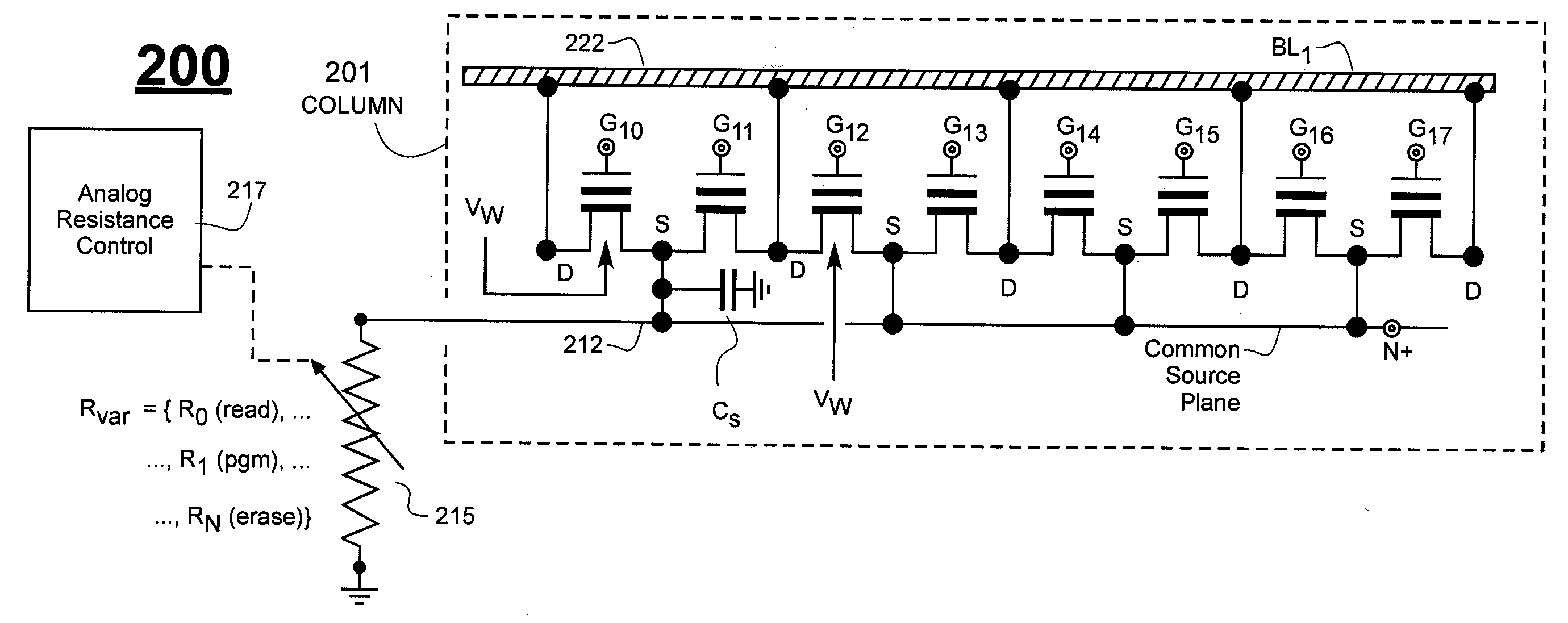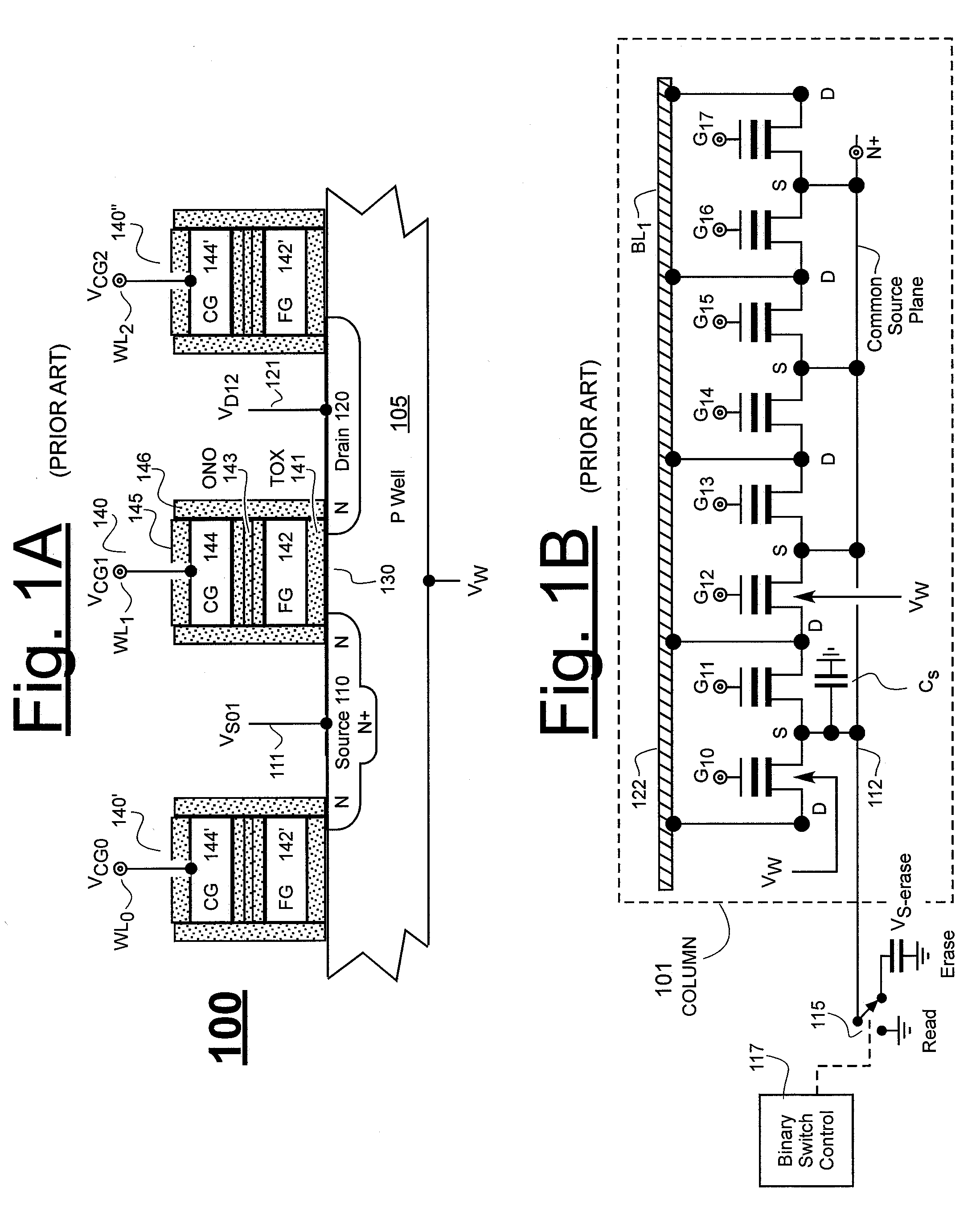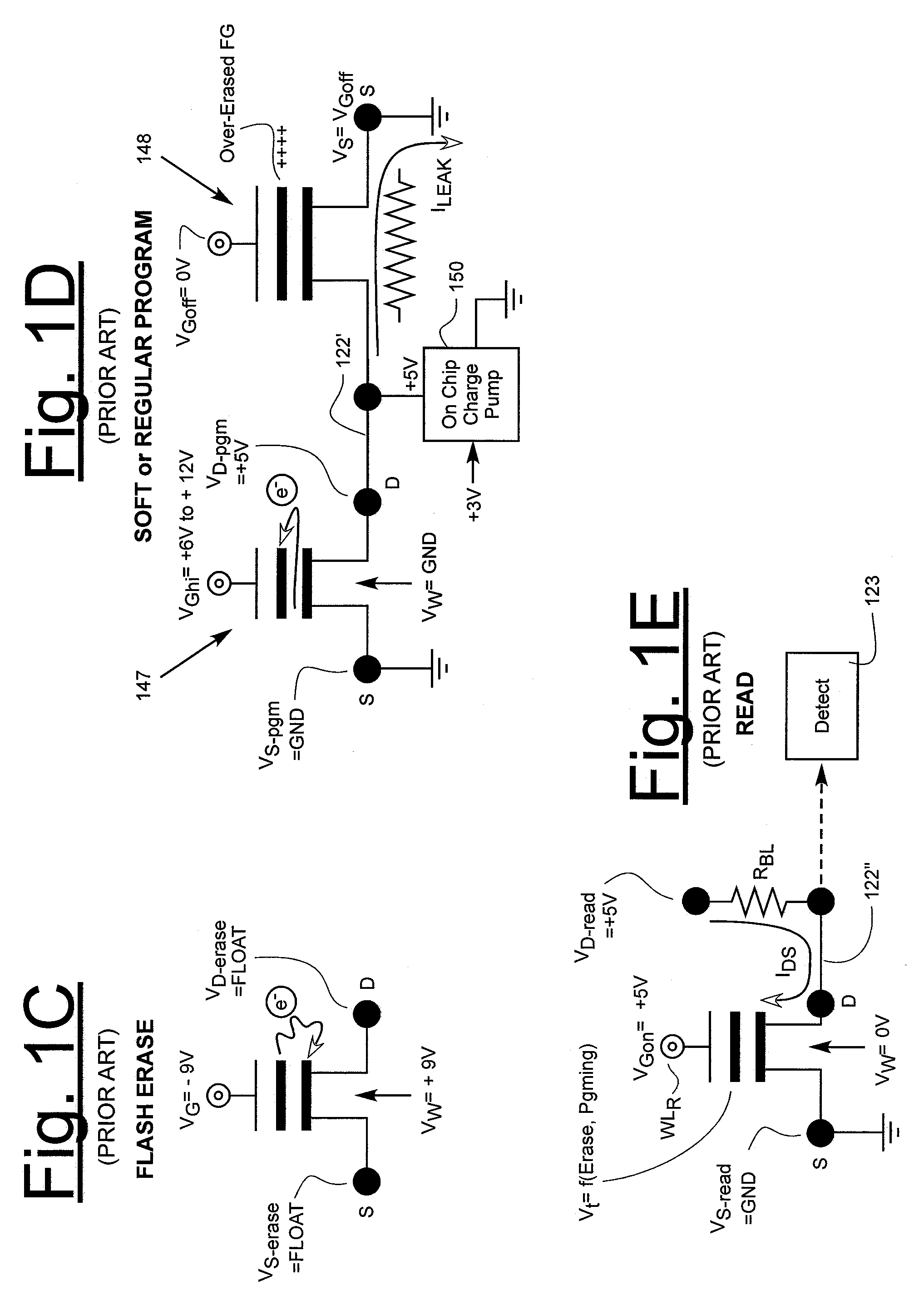Source biasing of nor-type flash array with dynamically variable source resistance
a source resistance and flash array technology, applied in the direction of digital storage, instruments, semiconductor devices, etc., can solve the problems of over-erasure, biasing the commonly connected source regions of such devices, and affecting the speed at which large amounts of new data can be written into flash memory chips, etc., to achieve the effect of limiting the speed at which large amounts of new data can be written
- Summary
- Abstract
- Description
- Claims
- Application Information
AI Technical Summary
Benefits of technology
Problems solved by technology
Method used
Image
Examples
Embodiment Construction
[0024]FIG. 1A is a schematic cross sectional side view showing three floating gate transistors in a NOR-array column of a conventional Flash memory device 100. The central gate stack 140 (coupled to word line WL1) defines part of a first nonvolatile memory cell that includes an N-type source region 110, an N-type drain region 120, and a P-type channel region 130. The source and drain regions, 110 and 120, are implanted in a P-well 105 that is contiguous with the channel region 130. The source, drain, channel and well regions may be integrally formed in a monolithic semiconductor substrate (i.e., monocrystalline silicon) by way of various well known doping techniques such as ion implant.
[0025]Source region 110 is in communication with a common source line (112 of FIG. 1B) by way of a source contact 111, while drain region 120 is in communication with a column bit line (122 of FIG. 1B) by way of a drain contact 121. Source contact 111 and drain contact 121 may be separated from the st...
PUM
 Login to View More
Login to View More Abstract
Description
Claims
Application Information
 Login to View More
Login to View More - R&D
- Intellectual Property
- Life Sciences
- Materials
- Tech Scout
- Unparalleled Data Quality
- Higher Quality Content
- 60% Fewer Hallucinations
Browse by: Latest US Patents, China's latest patents, Technical Efficacy Thesaurus, Application Domain, Technology Topic, Popular Technical Reports.
© 2025 PatSnap. All rights reserved.Legal|Privacy policy|Modern Slavery Act Transparency Statement|Sitemap|About US| Contact US: help@patsnap.com



